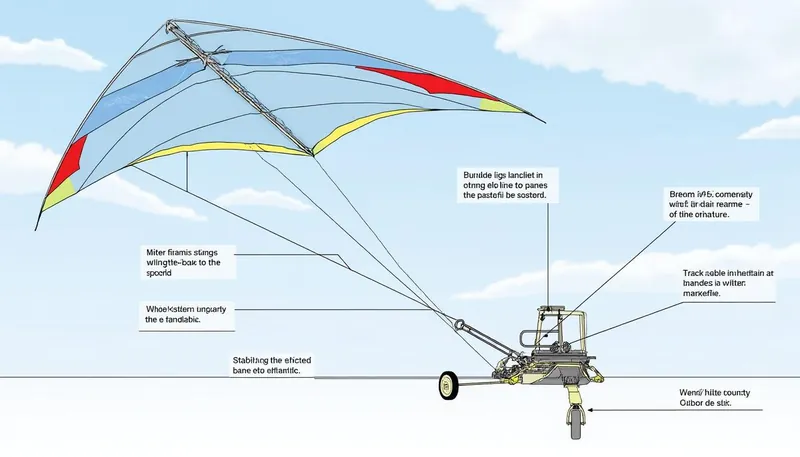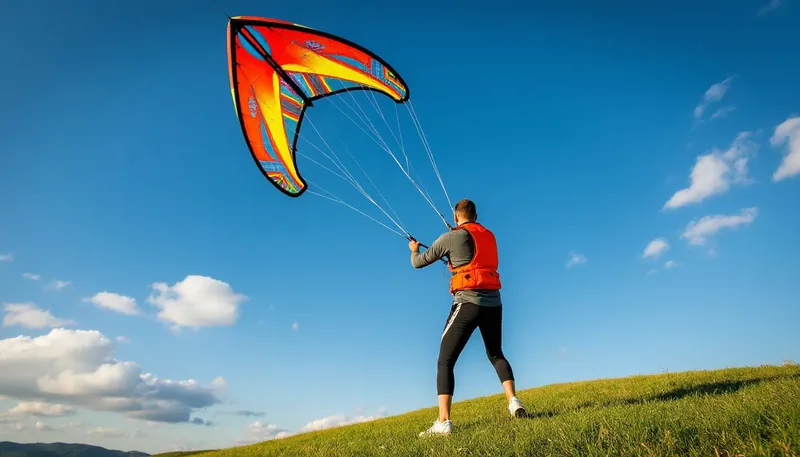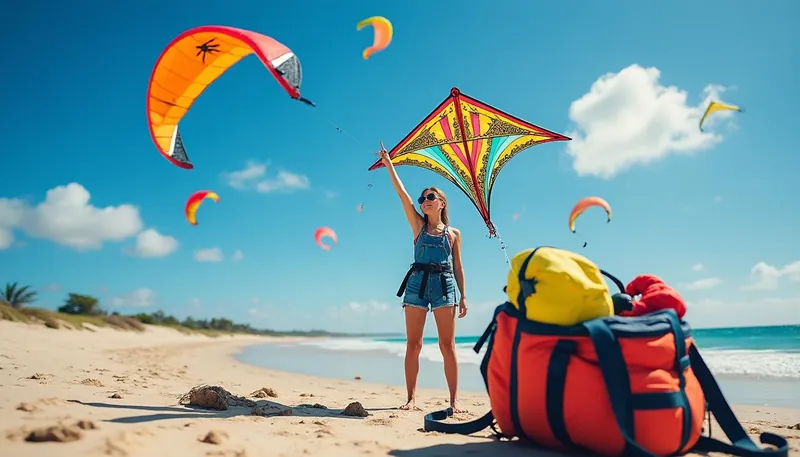Traction kiting has gained popularity in recent years as an exhilarating outdoor activity that blends the thrill of flying with the power of wind. It allows enthusiasts to harness the natural forces of nature, turning an ordinary day at the beach or park into an unforgettable adventure. By utilizing specially designed kites, traction kiting offers a unique way to experience the outdoors while engaging in an exciting sport. From land to water, these kites provide a range of endless possibilities, making it a favorite among adrenaline seekers. In this piece, we’ll take a deep dive into what traction kiting is all about, how it works, what equipment is required, and some good practices for getting started.
Brief
- Traction kiting utilizes large kites designed to pull the user across surfaces like land and water. 🌊
- Notable brands in the market include Ozone, Slingshot, and Flexifoil. 🎉
- Techniques can include snowkiting, kitesurfing, and landboarding. 🏄♂️
- The design of traction kites ensures safety and efficiency, key components for any budding kite enthusiast. 🔍
- Understanding wind conditions is crucial for a successful kiting experience. 💨
Understanding Traction Kites: Design and Functionality
Traction kites are not your standard kites; they are meticulously engineered to provide substantial pull, making them suitable for a range of outdoor sports. Their design often incorporates an aerodynamic structure that maximizes lift, giving users the ability to glide smoothly while being pulled along surfaces.Peter Lynn, a well-known innovator in the world of kites, played a significant role in developing these specialized kites, helping to establish their commercial viability in the 1990s.
The core features of traction kites can be divided into several categories: shape, size, and material. The shape of a traction kite resembles an airfoil which is critical for generating lift, just like an airplane wing. The size varies depending on the intended use and the wind conditions; bigger kites catch more wind, hence generating more pull. Material-wise, traction kites are usually made of durable fabrics like ripstop nylon, which withstands the rigors of outdoor sports and high winds.
| Feature | Description |
|---|---|
| Shape | Airfoil shape for optimal lift. |
| Size | Varies by use; larger kites produce more pull. |
| Material | Durable fabrics like ripstop nylon for stability. |
Traction kites are differentiated from traditional kites by their ability to perform under various conditions. Enthusiasts can choose to use them for different activities, including snowkiting, which takes place on snow, kitesurfing for water activities, and landboarding on dry land. Each of these activities brings unique challenges and rewards, making traction kiting a versatile sport for those who crave adventure.
This amazing sport requires practice and an understanding of the wind conditions. It’s crucial to know the weather forecast to select the right kite size for the expected wind strength. Generally, smaller kites are preferred in stronger winds, while larger ones work best in lighter conditions. Additionally, links to resources and instructional videos can further help beginners to navigate their diving journey into the world of traction kiting! 🌪️

Essential Equipment for Traction Kiting
Diving headfirst into traction kiting requires more than just a kite. Picking the right equipment is vital for not only enjoying the sport but also ensuring your safety. Here’s a breakdown of the essential gear you’ll need to get started:
- Kite: Your primary tool. Brands like HQ and Prism Kites offer a variety of options from beginner to advanced levels. 🪁
- Control Bar: This is the mechanism through which you control the kite. It’s essential for steering and managing the kite’s power. 🕹️
- Harness: Essential for attaching yourself to the kite. It allows you to ride hands-free as the kite pulls you along. 🎒
- Safety gear: Helmets, impact vests, and appropriate footwear are vital for protecting yourself while you discover various terrains. 🛡️
- Wind Meter: A useful tool to gauge wind conditions and choose the appropriate kite size. 🌬️
While purchasing these items, it’s necessary to consider your skill level—choose beginner-friendly equipment if you’re just starting. Many brands provide kits that bundle together kites, control bars, and harnesses for novice kite flyers. These beginner sets can save you money and time in the long run!
Try visiting local kite shops or online retailers specializing in kiting gear as you embark on your adventure. By choosing the right brands and the right setups, you can ensure that your first experience is both fun and safe. Look out for demo days where you can test various kites before making a commitment. Many enthusiasts swear by product reviews, forums, and social media groups dedicated to traction kiting as great resources for gathering firsthand experiences and recommendations.
Techniques and Safety in Traction Kiting
Understanding various techniques is paramount in mastering traction kiting. Whether you’re into kitesurfing, snowkiting, or landboarding, each discipline requires specific skills and strategies. One of the most critical aspects is understanding how to maintain control over the kite. For instance:
- Positioning: Stand sideways to the wind, which will allow the kite to pull you forward without losing balance. ⚖️
- Steering: Use the control bar to steer effectively, pulling downwards on one side and releasing tension on the other. 🚦
- Body Movement: Learn to shift your weight in sync with the wind’s pull, which will help in maintaining stability as you ride. 🏋️
- Fallback Techniques: Know how to safely disengage from situations where you lose control, such as releasing the control bar or rolling away from the pull. 🔄
Safety should always be the highest priority when engaging in any outdoor sport. Familiarize yourself with the area where you’re practicing; this awareness can prevent accidents. Additionally, it’s wise to kite in designated areas, avoiding crowded beaches or places where people could potentially be injured. Being aware of changing weather conditions is also critical—strong winds can shift quickly, and it’s essential to know when it’s time to come down.
| Safety Tip | Description |
|---|---|
| Stay Aware of Your Surroundings | Always be conscious of other kiters or people in the area to avoid accidents. |
| Check Your Gear | Inspect your kite, lines, and harness for wear and tear before every session. |
| Know When to Stop | Understand your limits and when conditions are becoming unfavorable. |
Engaging with the community can also aid in getting valuable insights. Joining local kiting clubs or online forums can help enthusiasts learn from the experiences of others and share tips that can enhance safety and performance. Remember, it’s better to learn as part of a group than to struggle solo amidst all the exciting moments of traction kiting!

Exploring the Growth of Traction Kiting and Community Engagement
The traction kiting community is vibrant and continuously growing, creating a space where enthusiasts of all skill levels can come together. As more people experience the thrill of being pulled by the wind, clubs and organizations have sprouted globally. These networks allow kiters to share knowledge, find partners for adventure, and engage in various kiting events and competitions. From local meet-ups at parks to international competitions, events serve to showcase creativity and skill in using traction kites.
Moreover, brands like Best Kiteboarding and Naish are either sponsoring events or organizing community gatherings to promote the sport. Such gatherings often combine lessons for beginners and opportunities for experienced kiters to master new tricks or techniques. They offer a supportive environment where everyone can learn from each other. The exchange of experiences and stories not only enhances individual skills but also builds lasting friendships.
- Local Clubs: Find a local kiting club for practice and community. 🧑🤝🧑
- Competitions: Participate in or attend kiting competitions for networking and inspiration. 🏆
- Workshops: Attend workshops conducted by experienced kiters or brands to enhance your skills. 📚
Social media has also become an essential platform for connecting with fellow kiters. Sharing photos, videos, and experiences has allowed the sport to reach wider audiences. YouTube channels and Instagram accounts dedicated to traction kiting are filled with tutorials, safety tips, and stunning visuals of kiting adventures that inspire newcomers to join the fun!
What is the best kite for beginners?
For beginners, kites from brands like HQ and Prism Kites are highly recommended due to their user-friendly designs and durability.
Is traction kiting safe?
Yes, traction kiting is safe provided you follow safety guidelines, use appropriate gear, and kite in designated areas.
How do I choose the right size kite?
Your kite size depends on your weight and the prevailing wind conditions. A wind meter can help gauge the conditions for the perfect selection.
Can I use a traction kite for snowboarding?
Absolutely! Snowkiting is a popular activity where a traction kite is used to pull riders over snow-covered terrains.
What additional gear do I need for kitesurfing?
Key gear includes a control bar, harness, safety equipment, and suitable board depending on your water activity.


